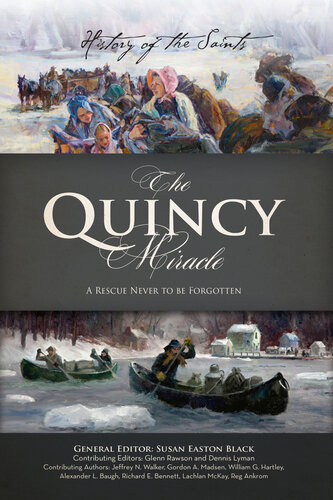

Most ebook files are in PDF format, so you can easily read them using various software such as Foxit Reader or directly on the Google Chrome browser.
Some ebook files are released by publishers in other formats such as .awz, .mobi, .epub, .fb2, etc. You may need to install specific software to read these formats on mobile/PC, such as Calibre.
Please read the tutorial at this link: https://ebookbell.com/faq
We offer FREE conversion to the popular formats you request; however, this may take some time. Therefore, right after payment, please email us, and we will try to provide the service as quickly as possible.
For some exceptional file formats or broken links (if any), please refrain from opening any disputes. Instead, email us first, and we will try to assist within a maximum of 6 hours.
EbookBell Team

4.0
6 reviewsIn the late winter and early spring of 1839, Latterday Saint refugees began appearing on the banks of the Mississippi River opposite Quincy, Illinois. They had been ordered to leave the state of Missouri by the decree of Governor Lilburn W. Boggs, and the state militia had enforced the chief executive's infamous Extermination Order.
Banished from Missouri and their homes, the Saints took the only route out of the state open to them—due east to Quincy, where they hoped the could escape the unspeakable atrocities of Missouri. The citizens of Quincy looked across the wide river and saw there the starving and freezing refugees, arriving in droves. Before long, hundreds could be seen lining the shore.
The people of Quincy were trouble by what they saw. Who are these people? Why are they flocking to our shores? What are we going to do? Their response became known as The Quincy Miracle.
The story that follows is the heartrending history of the Latterday Saints in Quincy, Illinois. It's an emotional story: at one moment you'll feel shock and outrage over the cruelty endured by the Saints in Missouri, and at the next your heart will swell with gratitude unbounded for the kindness shown them in Quincy—the same gratitude expressed in a most unusual way more than 160 years later in the summer of 2002.